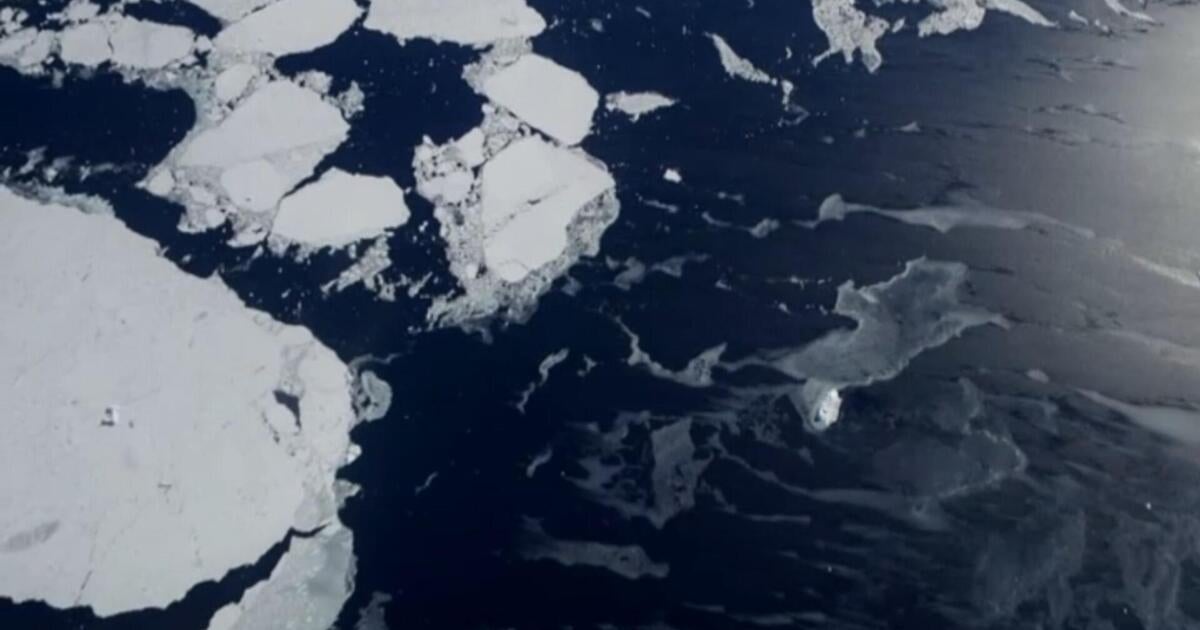Unraveling the Impact: How Melting Ice Threatens Earth’s Mighty Ocean Currents
Recent research reveals that the ongoing melting of polar ice is not just a symptom of climate change but poses a significant risk to the stability of Earth’s strongest ocean currents. This phenomenon could lead to drastic shifts in global climate patterns and marine ecosystems. The implications are profound; as the ice melts, the delicate balance of oceanic and atmospheric systems faces unprecedented challenges.
The Connection Between Melting Ice and Ocean Currents
To understand how melting ice threatens ocean currents, we first need to grasp the vital role these currents play in regulating our planet’s climate. Ocean currents are like the Earth’s conveyer belts, influencing weather patterns, marine life, and even global temperatures. They transport warm water from the equator towards the poles and cold water back towards the equator, creating a dynamic system that is crucial for maintaining climate stability.
One of the most significant ocean currents affected by melting ice is the **Atlantic Meridional Overturning Circulation (AMOC)**. This current is responsible for moving warm, salty water from the tropics to the North Atlantic, where it cools and sinks, driving a critical part of the global conveyor belt. Scientists have observed that the AMOC is weakening, largely due to the influx of freshwater from melting glaciers and ice sheets in Greenland and Antarctica.
The Mechanism Behind the Threat
When polar ice melts, it introduces large volumes of freshwater into the ocean. This influx changes the water’s density, which is crucial for the sinking process that drives the AMOC. The current relies on the salinity and temperature gradients of seawater to function effectively. Freshwater is less dense than saltwater, and when it dilutes the salty waters of the North Atlantic, it disrupts the current’s flow.
- Increased Freshwater Input: As glaciers and ice sheets melt, they contribute to rising sea levels and alter ocean salinity.
- Temperature Changes: The warm waters that typically drive the AMOC are becoming less effective at sinking due to the cooling effects of melting ice.
- Feedback Loops: A weaker AMOC can lead to further warming in the Arctic, creating a vicious cycle of more ice melt and further disruption of ocean currents.
Global Climate Patterns at Risk
The potential impacts of a weakened AMOC extend far beyond the North Atlantic. Climate models indicate that this disruption could result in severe weather events, altered precipitation patterns, and shifts in marine ecosystems around the globe. Some of the expected changes include:
- Increased Storm Intensity: Changes in ocean currents can lead to more severe hurricanes and tropical storms, particularly along the eastern coast of the United States.
- Altered Rainfall Patterns: Regions that depend on predictable seasonal rains may experience droughts or flooding, affecting agriculture and water supply.
- Marine Ecosystem Disruption: The shift in currents can change the distribution of nutrients in the ocean, impacting fish populations and marine biodiversity.
Marine Life and Ecosystem Impacts
The effects of melting ice on ocean currents also pose a significant threat to marine ecosystems. As currents shift, they can alter the habitat of various marine species, disrupting food chains and leading to declines in fish populations that are vital for both ecological balance and human economies.
For example, the **cod** population in the North Atlantic has already been affected by changes in water temperature and salinity. Warmer waters can drive fish species northward, away from traditional fishing grounds, impacting local fishing communities. Additionally, sensitive marine species, such as polar bears and seals, rely on stable ice conditions to hunt and breed. As their habitats diminish, their survival becomes increasingly precarious.
Potential Solutions and Mitigation Strategies
While the challenges posed by melting ice and weakened ocean currents are daunting, there are avenues for action. Global initiatives focused on reducing carbon emissions and promoting sustainable practices can help mitigate the effects of climate change. Here are some strategies that could help:
- Transition to Renewable Energy: Investing in solar, wind, and other renewable energy sources can reduce greenhouse gas emissions, slowing the rate of global warming.
- Conservation Efforts: Protecting marine ecosystems and promoting sustainable fishing practices can help preserve marine biodiversity.
- International Cooperation: Global treaties and agreements, such as the Paris Agreement, play a crucial role in uniting countries to combat climate change collectively.
The Role of Public Awareness and Education
Raising public awareness about the impacts of melting ice on ocean currents is vital. Education can empower individuals and communities to take action, whether through advocacy, lifestyle changes, or supporting policies aimed at environmental protection. By fostering a greater understanding of the interconnectedness of our planet’s systems, we can encourage responsible stewardship of our oceans and climate.
Conclusion
In conclusion, the melting of polar ice is a complex issue with far-reaching implications for Earth’s mighty ocean currents. As we unravel the impact of these changes, it becomes clear that immediate action is needed to address climate change and its effects on our planet. By understanding the critical role of ocean currents in regulating climate and supporting marine ecosystems, we can work towards solutions that protect both our environment and ourselves. The future of our oceans—and ultimately our planet—depends on the choices we make today.
As we face these challenges, it is crucial to remain optimistic and proactive. With global cooperation, innovative technologies, and a commitment to sustainability, there is hope that we can mitigate the impacts of melting ice and preserve the health of our oceans for future generations.
See more Your Daily Weather



